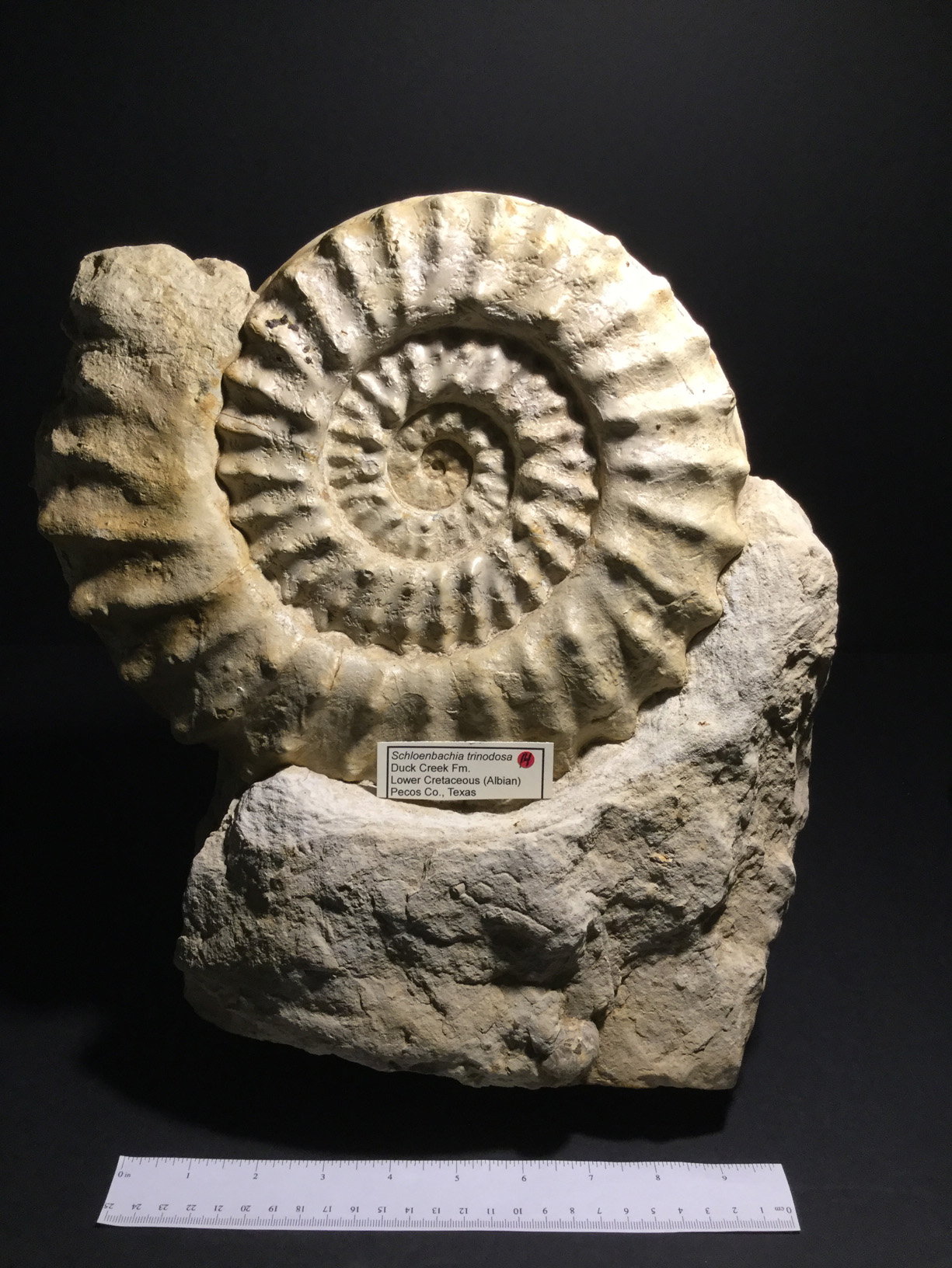
LK Ammonite Schloenbachia
Schloenbachia trinodosa
Duck Creek Fm. (Lower Cretaceous - Albian)
Pecos County, Texas
Duck Creek Fm. (Lower Cretaceous - Albian)
Pecos County, Texas
This specimen is one of the finest that we have ever collected. It is prepared on the original matrix. It has outstanding nodes and excellent definition. This specimen is 10 1/2 inches and is a dramatic display piece. This specimen has very good sutures. The inner-most whorl is restored.
The genus is small to large-sized with evolute coiling and deep, narrow umbilicus. The inner-most whorls are restored. The whorl section is taller than wide and is subrectangular or squarish. The venter has a low keel and appears squarish rather than rounded. Ribs are straighter and more widely spaced just before the body chamber. Three rows of coarse, equidistantly situated tubercles (nodes) occur: Umbilical, lateral, and ventrolateral. Nodate to clavate ventrolateral tubercles are particularly prominent.
In Pecos County the Duck Creek is about 20 feet thick and contains a prominent ammonite fauna dominated by Schloenbachia and Eopachydiscus. The Duck Creek appears to be conformable to the underlying Kiamichi Formation. The formation is a soft chalky , nodular, whitish, argillaceous limestone rich in fossils. The basal ledge that caps the Kiamichi contains a prominent of fossil oysters and the echinoid Macraster.
The genus is small to large-sized with evolute coiling and deep, narrow umbilicus. The inner-most whorls are restored. The whorl section is taller than wide and is subrectangular or squarish. The venter has a low keel and appears squarish rather than rounded. Ribs are straighter and more widely spaced just before the body chamber. Three rows of coarse, equidistantly situated tubercles (nodes) occur: Umbilical, lateral, and ventrolateral. Nodate to clavate ventrolateral tubercles are particularly prominent.
In Pecos County the Duck Creek is about 20 feet thick and contains a prominent ammonite fauna dominated by Schloenbachia and Eopachydiscus. The Duck Creek appears to be conformable to the underlying Kiamichi Formation. The formation is a soft chalky , nodular, whitish, argillaceous limestone rich in fossils. The basal ledge that caps the Kiamichi contains a prominent of fossil oysters and the echinoid Macraster.



